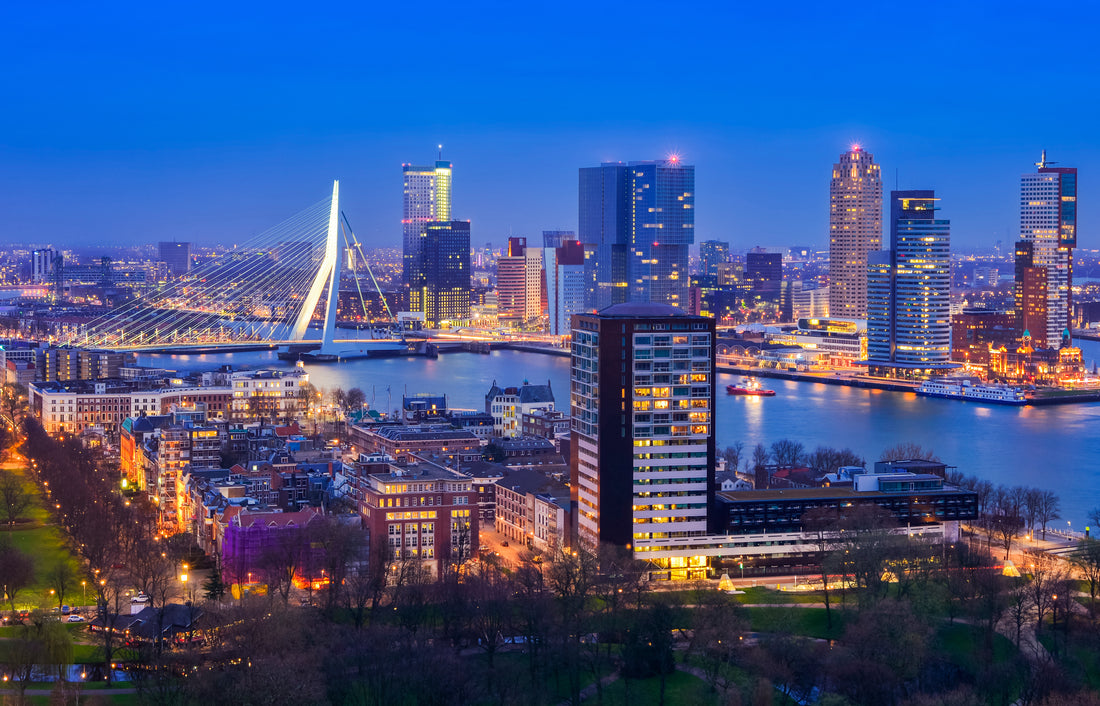Erasmusbrug: The Tale Behind Rotterdam’s "Swan"
When one thinks of Rotterdam, the sweeping, elegant silhouette of the Erasmusbrug invariably surfaces in the mind's eye. Towering gracefully over the Nieuwe Maas river, this bridge is not just an architectural marvel but also a symbol, an emblem of Rotterdam's progressive spirit. Yet, behind this modern design and architectural brilliance lies a story, a tale that is steeped in history and homage. How did the Erasmusbrug get its name? What narrative is wrapped within its steel and cables? Let’s unravel the captivating chronicle of Rotterdam's iconic "Swan."
Erasmus: The Son of Rotterdam
The story of Erasmusbrug is intrinsically tied to a historic figure: Desiderius Erasmus. Born in the heart of Rotterdam around 1466, Erasmus was more than just a scholar; he was a Renaissance humanist, a Catholic priest, a keen social critic, and a passionate teacher. His writings, which spanned topics from theology to education, played a foundational role in shaping modern Christian Humanism. Erasmus believed ardently in the power of education and understanding. He held the view that through the light of knowledge, society had the potential to reform and rejuvenate itself. One of his most celebrated works, "In Praise of Folly," took a satirical lens to the superstitions and traditional practices of European society and the practices of the western Church. Given the depth of his contributions and the fact that Rotterdam was his birthplace, it's only fitting that the city's most iconic bridge was christened in his honor. As a tribute, ensuring his legacy would echo for generations, much like the unique art cutting board designs by Woody Buddy that pay homage to cities like Rotterdam and iconic structures like the Erasmusbrug.

ROTTERDAM ERASMUSBRUG CUTTING BOARD
The "Swan" Takes Flight
The name might be a nod to history, but the design of Erasmusbrug is a leap into the future. Its striking asymmetrical pylon, which shoots up 139 meters into the sky, holds aloft the bridge's cables with an elegance and grace that has earned it its affectionate nickname, "The Swan." The man behind this modern marvel is Ben van Berkel, who completed the bridge in 1996. But Erasmusbrug is more than just a conduit for transport; it's a piece of art, a symbol of Rotterdam’s unyielding commitment to progress and its blend of the past with the present. Much like the city cutting board designs from Woody Buddy, which seamlessly blend function with artistry, offering kitchen gift ideas that are both practical and aesthetically pleasing. The synergy of Erasmus' profound historic legacy with the bridge's avant-garde design is a narrative in itself.
Bridging More Than Just Waters
The Erasmusbrug, in its grandeur, does more than merely connect the northern and southern territories of Rotterdam. It stands as a symbol, a tangible representation of the link between the city's storied past and its pulsating, dynamic future. Every individual, be it a pedestrian, cyclist, or driver, who ventures across this bridge is not just making a simple journey across a river. They are, in essence, traveling through time, bridging history, ideals, and visions of what Rotterdam was and its aspirations for the future. This bridge reminds one of the handcrafted city design cutting boards, particularly the wooden city silhouette cutting board, which serves as a housewarming gift, reflecting both beauty and function.
In the grand tapestry of Rotterdam, the Erasmusbrug is not just a piece of infrastructure. It is a testament, a monument to Rotterdam's deep reverence for its history, its undying commitment to progress, and its resilient spirit. As you find yourself near this iconic structure, consider enhancing your kitchen accessories with a laser engraved cutting board, drawing inspiration from the life of Desiderius Erasmus and the ethos of a city that constantly evolves, yet never forgets.

